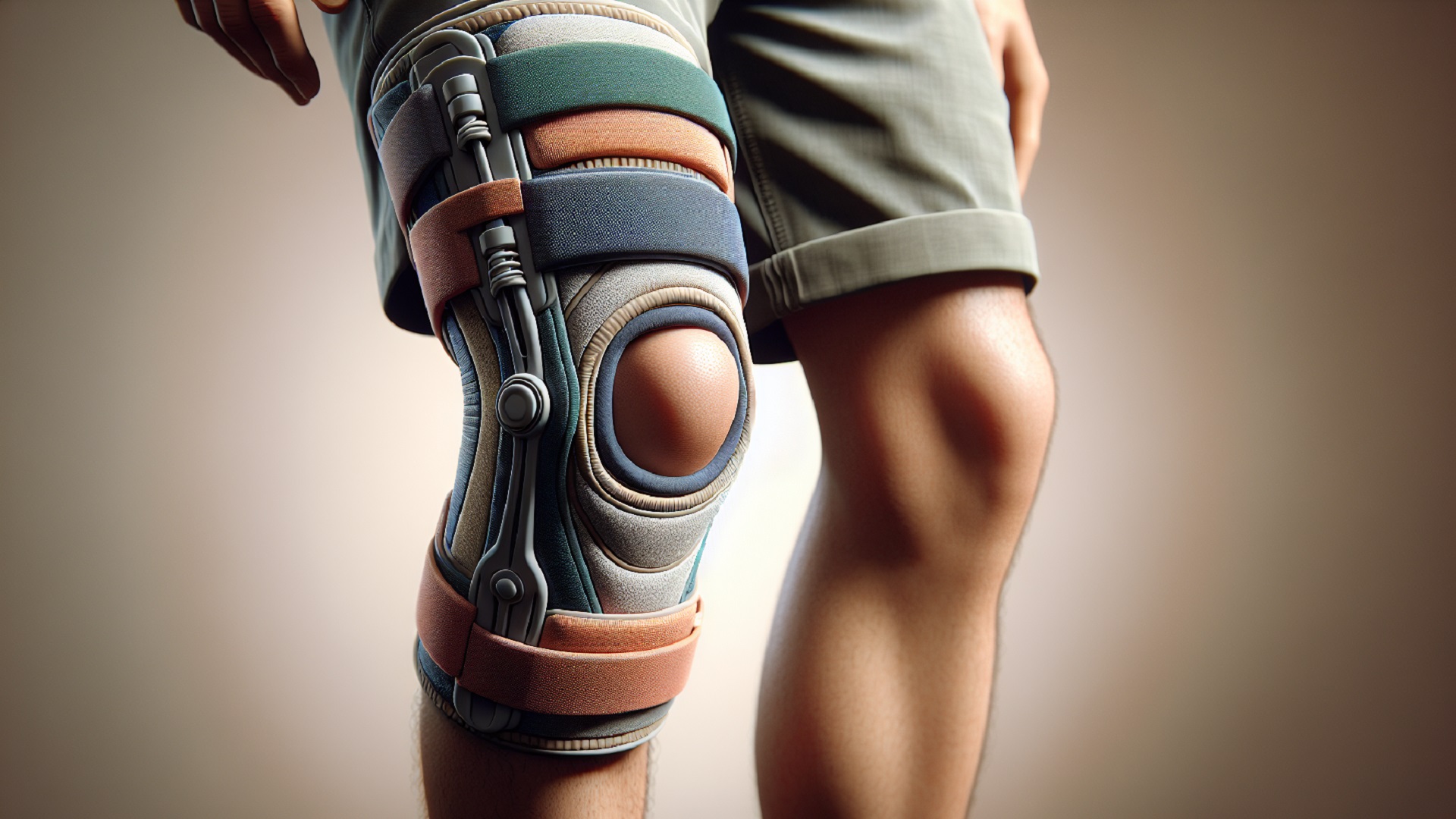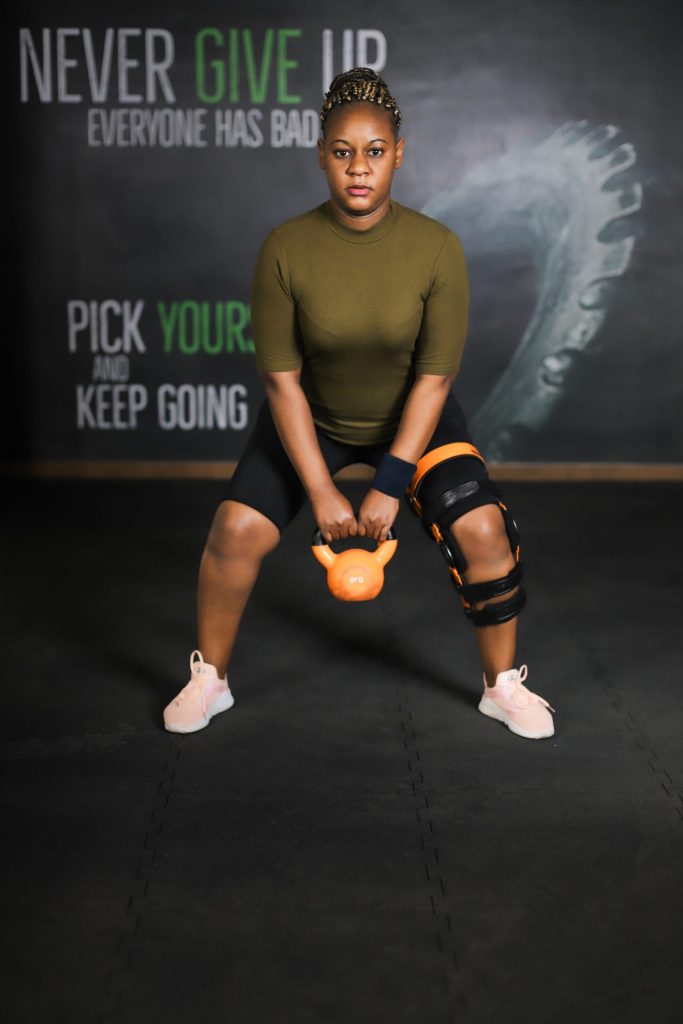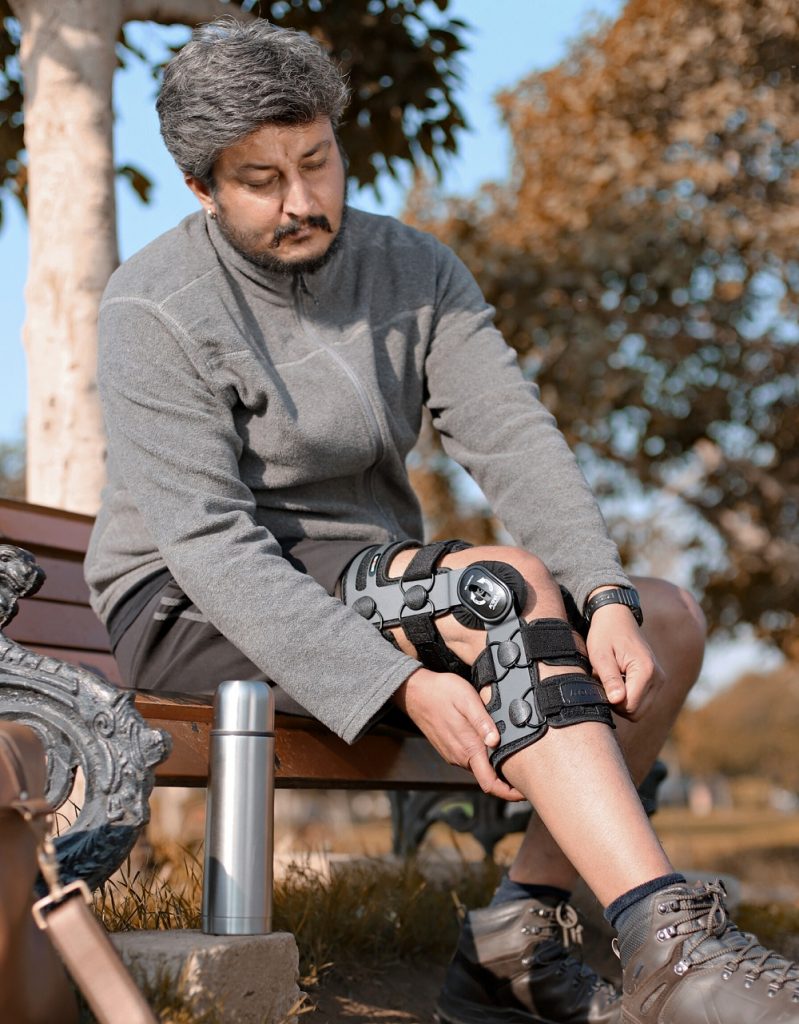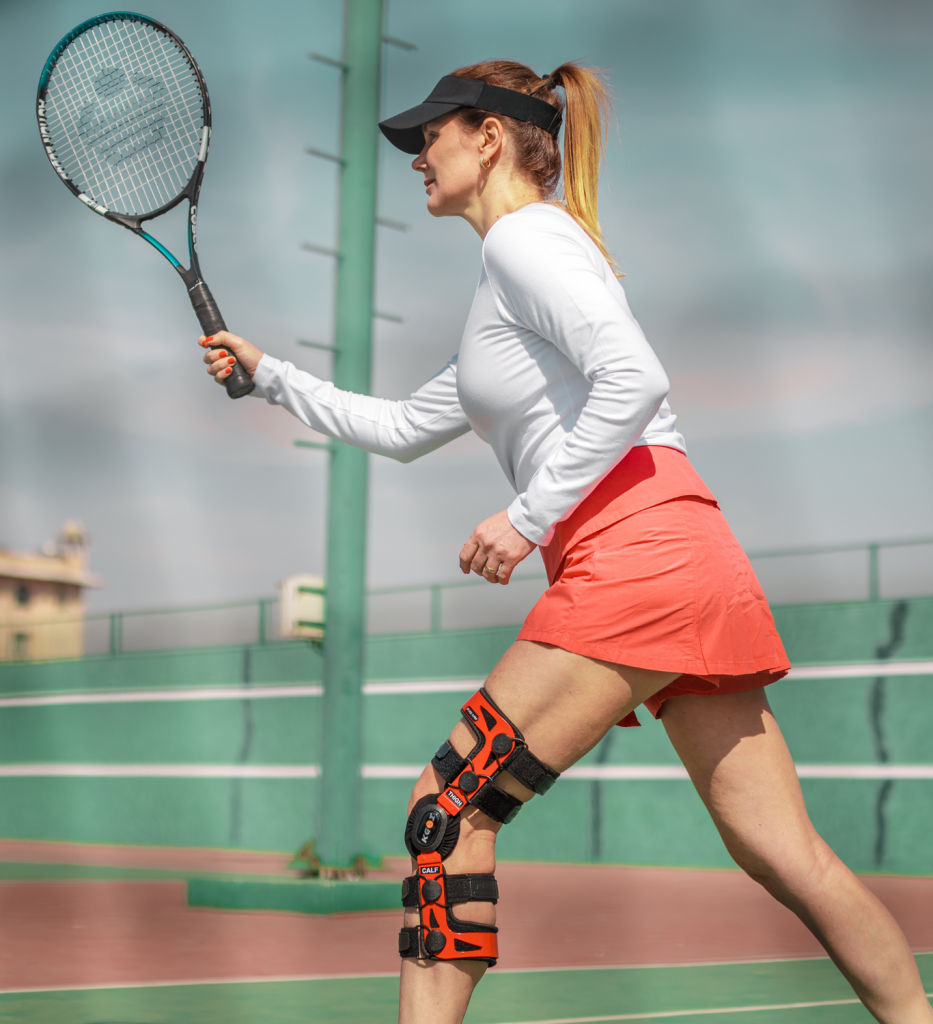Exploring knee braces can seem intimidating, and we get it – because we’ve journeyed through that maze ourselves. After thorough research, we discovered Bauerfeind’s extensive selection customized for a slew of needs and conditions. Our guide is here to walk you side by side to find that perfect knee brace match, be it an unloader brace for easing arthritis or a plus-size option ensuring extra comfort and support.
Stick with us as we help uncover the ideal fit for your unique journey.
Understanding Knee Braces
To get why knee braces are helpful, let’s break it down. A knee brace is like a strong friend that hugs your knee to keep it safe and supported while you move.
What is a knee brace?
A knee brace is like a strong friend for your knee. It helps absorb stress that can hurt the knee joint. This is super important in sports where you move a lot and fast, such as American football, soccer, handball, squash, and skiing.
We’ve seen how wearing one allows you to move fully while keeping your knees safe from too much pressure.
Wearing a knee brace isn’t just about protection; it’s also about feeling secure during any activity—be it running errands or running on the track. From our own use, we found that whether you’re looking for a knee brace for men or women, there’s an option out there that fits just right.
Options range from sleeves to straps and wraps made of various materials offering mild to maximum support.
A well-fitted knee brace feels like unlocking new levels in your active life.
With so many choices like unloader knee braces and offloader knee braces—even plus sizes up to XXL—finding one that suits your needs means considering where exactly your knee needs support.
Let’s talk about what these braces do next.
What does a knee brace do?
Knee braces play a big role in keeping our knees safe, especially during sports. They protect the knee joint from harm. This is very important in both contact and noncontact sports.
Knee braces can slow down force hitting the bones in our legs. That’s really good for reducing harm during sudden impacts or movements.
We found that wearing a knee brace supports our movements and lessens pain and pressure. It also helps lower the strain on the ACL (a key ligament in the knee) particularly from impacts coming from certain directions or heights.
For us, choosing a knee brace with strong support makes a lot of sense, be it for daily wear or special activities.
Choosing the right kind of support is crucial – from mild to maximum support options like sleeves, straps, and wraps. Whether you need a knee brace plus size, XXL, or any other size, finding one that fits well ensures comfort while moving around or engaging in activities which demand more from your knees.
Benefits of Wearing a Knee Brace
Wearing a knee brace offers big perks. They help your knees heal faster and can even make you perform better in activities.
Enhanced recovery
Knee problems can slow us down, but we’ve found that wearing the right knee brace speeds up recovery. Dynamic posterior cruciate ligament (PCL) braces, like the Ossur Rebound® PCL Knee Brace, make a huge difference.
This brace specifically eases the load on your PCL, helping you heal faster after an injury or surgery. We’ve seen how it turns weeks of recovery into days by offering targeted support where it’s needed most.
We also have experience with functional rehabilitative braces improving our abilities to move and function without pain. For folks dealing with knee osteoarthritis, something like the BioniCare® transcutaneous electrical stimulator is a game-changer.
It tackles pain directly at its source—no pills or side effects—just relief and a quicker path back to doing what we love.
Wearing a knee brace for women or XXL sizes isn’t just about support—it’s about reclaiming our lives from pain.
Enhanced performance
After seeing improvements in recovery, we noticed a big leap in how well we could perform. Wearing knee braces isn’t just for getting back on your feet; it’s also about moving beyond limitations.
These devices help bring back normal walking patterns and boost our abilities. With the help of small, lightweight actuators like brushless DC motors, they offer high power without adding too much weight or bulk.
We’ve experienced firsthand how active knee braces can make a difference. This tech focuses on stability and mobility, making it possible to walk, run, or jump more effectively. For us—and likely for you—this means not having to sit out from activities we love because of knee problems.
It’s amazing what the right support around your knee can do.
Using these braces has allowed us to push harder during physical activities with less worry about injuries or pain. The electric actuators inside them work hard so our knees don’t have to.
This means even with a condition that would normally slow us down, we’re able to keep up and sometimes even outpace others which makes opting for a knee brace xxl size an empowering choice.
Supports movement
Knee braces like the Medi M.4s and Guardian Rehabilitator have changed the game. They help us move better, even with knee problems. These dynamic PCL braces give amazing support and make our knees stable from behind.
This means we can walk, run, or move without worrying too much about hurting our knees again.
Using these braces feels like getting muscle therapy while moving. It’s a big deal for us because it strengthens our muscles without extra effort. We’ve noticed that wearing them during activities makes movement smoother and less painful.
Next up, let’s talk about how they also take away pain and pressure.
Relieves pain and pressure
Wearing knee braces can really help take away the pain and pressure we feel in our knees. These braces work by offering support that reduces the stress on our knee joints. We’ve seen how semi-rigid knee braces, for instance, are great at easing the symptoms of knee osteoarthritis, a common problem many of us face.
They do this not just by supporting the joint but also by lessening muscle co-contraction around the knee. This means less strain and, as a result, less pain for those wearing them.
They reduce muscle co-contraction and pain, relieving pressure on the knee joint.
From what we’ve experienced, another big plus is how these braces help with swelling. By compressing the area gently, they control both swelling and pain — making it easier to move around without feeling every step.
Let’s look into how different types of braces offer varying levels of support next.
Types of Knee Braces
There are many kinds of knee braces, each built to help your knee in different ways. Explore all options to find the best fit for you.
Mild to maximum support
Knee braces range from mild to maximum support, making it easy to find the right fit for our needs. For those of us with mild knee pain or swelling, slip-on braces are a go-to. They’re easy to wear and offer that little bit of support we need to keep moving comfortably.
On the other end of the spectrum, hinged knee braces give the highest level of support. These are perfect for serious injuries or recovery after surgery, providing solid stability so we can heal properly.
Choosing between these extremes depends on what we’re dealing with. For instance, soft hinged knee braces strike a nice balance for mild to moderate support – they’re not too restrictive but still offer enough protection and relief during activities.
And if we’re looking at custom options, be prepared – they can cost upwards of $1500 but offer specific support for our needs. From personal experience, investing in a good knee brace can make all the difference in recovery times and getting back to doing what we love without worry.
Different materials (sleeves, straps, wraps, etc.)
So, after covering how much support different knee braces offer, let’s talk about the materials they’re made from. We’ve found that sleeves, straps, and wraps all have their unique perks for your knees.
For starters, sleeves give our knees compression and warmth. This is great during workouts because it means light support and less chance of injury.
Straps are a game-changer for specific types of knee pain. We’ve seen them work wonders on days when the pain tries to get in the way of our plans. They’re super focused on relieving pressure exactly where you need it.
Then there are wraparound braces. These buddies are perfect if your pain is mild or moderate. They’re easy to adjust, making them a solid choice for daily use or when getting back into exercise post-injury.
Plus, hinged braces really step up the game with protection after surgery—keeping everything in place so we can recover without extra stress.
Through our own bumps and bruises along the way, we’ve learned that picking out the right material matters as much as choosing the type of brace itself. Each option offers something special to help us stay active and comfortable no matter what comes our way.
Factors to Consider When Choosing a Knee Brace
Picking the right knee brace means thinking about where you need support, how active you are, if it feels good to wear, and any risks. Keep reading to learn more!
Where do you need support?
We understand that knees can hurt for many reasons. Sometimes, they swell from injury or arthritis. Other times, they might not feel stable because of a ligament issue or even a fracture.
That’s why it’s crucial to figure out where your knee needs the most help. Slip-on braces work well if you’re dealing with mild pain or swelling. These are pretty common for folks with arthritis or minor injuries.
But if your problem is more serious, like an ACL injury, severe strains, or knee instability, you’ll want something stronger — like hinged knee braces.
These hinged versions are great for significant injuries and can keep your knee steady after trauma. Custom braces go even further; designed specifically for your leg, they’re perfect when recovering from big issues like ligament damage or serious strains.
They all aim to boost strength, flexibility, balance, and how much you can move without pain.
Next up? We’ll explore what keeps you moving – Your activity level.
Your activity level
Our activity level greatly influences the type of knee brace we need. For those of us staying active with knee osteoarthritis, the right brace can mean a world of difference. It’s all about improving our strength and function, something a pneumatic brace with extension assist does well.
This particular type not only supports our knees during physical activities but also helps in reducing pain.
We find that engaging in regular exercises or sports requires support that matches our intensity. The choice becomes clearer when we consider the rehabilitative benefits for those undergoing total knee arthroplasty (TKA) pre-habilitation or looking to reverse post-operative issues like extension deficits/flexion contractures.
A well-chosen knee brace addresses muscle impairments effectively, enabling us to maintain or even increase our activity levels without fear of injury.
Selecting a comfortable and fitting knee brace makes all the difference in how we move and heal. Next up, let’s talk about why comfort and fit should never be overlooked.
Comfort and fit
Matching your activity level with the right knee brace is a crucial step. Next, we focus on comfort and fit. A good knee brace feels like part of your body. It should not pinch or slip while you move.
We’ve learned that proper fit is key to making sure your knee brace works well.
We always look for braces with comfortable materials and adjustable straps. These features make a big difference in how a brace fits day to day. Too tight, and it cuts off circulation; too loose, and it won’t support properly.
Breathable materials matter too, especially when we wear our braces for long hours.
From experience, trying different sizes helps find the perfect fit faster than just guessing does. We also check if we can adjust the straps ourselves because what feels snug in the morning might need adjusting by afternoon activities or swelling goes down throughout the day!
Possible risks and side effects
After making sure the knee brace fits well and feels comfortable, we need to talk about some risks and side effects. Sometimes, wearing a knee brace for too long can cause our muscles to get weaker.
We have seen that not getting it right with the fit might lead to skin problems or even discomfort.
We’ve also heard from folks who find moving around gets harder with a knee brace on. And though it’s rare, there are cases where someone has an allergic reaction to what the brace is made of.
So, it’s key for us all to listen to our bodies and check any changes closely.
Customer Reviews and Recommendations
We always take time to go through customer reviews before picking a knee brace. This step has never let us down. People with knee problems share their stories online, talking about how certain braces helped them or didn’t meet their needs.
These reviews are like treasures, guiding us to the best choices out there. For instance, we learned about the high-quality knee braces from reputable brands just by reading what others had experienced.
It’s fascinating and super helpful.
Asking for recommendations does wonders too. We reached out to medical professionals and got some great advice on which knee braces would suit our specific needs. Their expertise combined with real-life feedback from users played a big role in our decisions.
Plus, knowing Ortho Bracing offers 24/7 customer service gives us peace of mind. If we ever run into issues or have questions, help is just a call away.
Going through this process made all the difference for us. We felt confident and reassured in our choices, thanks to the shared experiences of others and expert opinions we sought out.
Conclusion
Choosing the right knee brace is a smart move for anyone with knee troubles. With all we’ve shared, finding a fitting brace should feel less overwhelming. Our guide aims to make your selection journey smoother – whether you’re looking at Bauerfeind’s range or exploring other options.
Knee braces offer more than just support; they bring back the joy of movement and activity. So, go ahead and pick one that suits your needs best – comfort, support, and recovery are within reach.
FAQs
What’s the purpose of knee braces for support?
Knee braces are designed to provide stability and strength to your knees. They can help in injury recovery, pain relief, and preventing future injuries.
How do I choose the right knee brace?
Choosing a knee brace depends on factors like your specific need – whether it’s for injury recovery or preventive measure, comfort level, size of your knee, material preference and advice from healthcare professionals.
Are all knee braces the same?
Nope! Knee braces come in various types each offering different levels of support – some offer compression, others have hinges for more stability while some are wraparound types that allow adjustments.
Can I wear my knee brace all day?
It depends on why you’re using it; however, it’s best to follow instructions given by a healthcare professional or manufacturer guidelines just to be safe.





